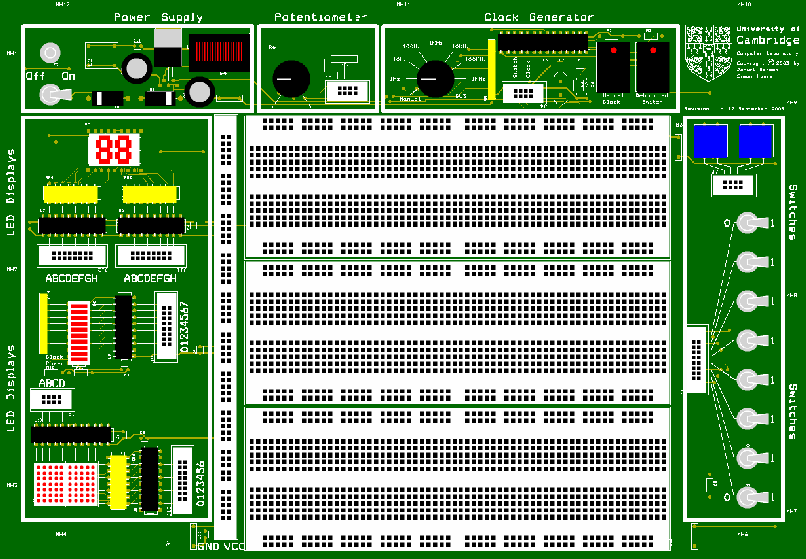|
|
|||||
| Computer Laboratory Introduction |
||
| Computer Laboratory > Course material 2004-05 > 1A Hardware Workshops > Introduction |
IntroductionMany materials are available on which to build prototype circuits. The material chosen will depend on the required life and use of the circuit. For laboratory use or other short-term applications where a permanent circuit is not needed and operating frequency is below 10 MHz, solderless breadboards such as that shown below can be used. The board comprises:
There are three banks of LEDs on the left hand side of the board for signal output:
 Before you start read through the sections on:
Common Ticking CriteriaAll of the workshops should be written up in full. From your notes it should be possible for somebody else to be able to reproduce your work. This is good scientific practise. When an exercise is complete and written up, including answers to the questions, the final page will be signed by a demonstrator and a tick entered in the tick sheet. VERY IMPORTANT: you need to hand in this assessed exercise as part of your portfolio of work at the end of the year (see the Head of Department's notice), SO YOU MUST KEEP YOUR WORK! |
